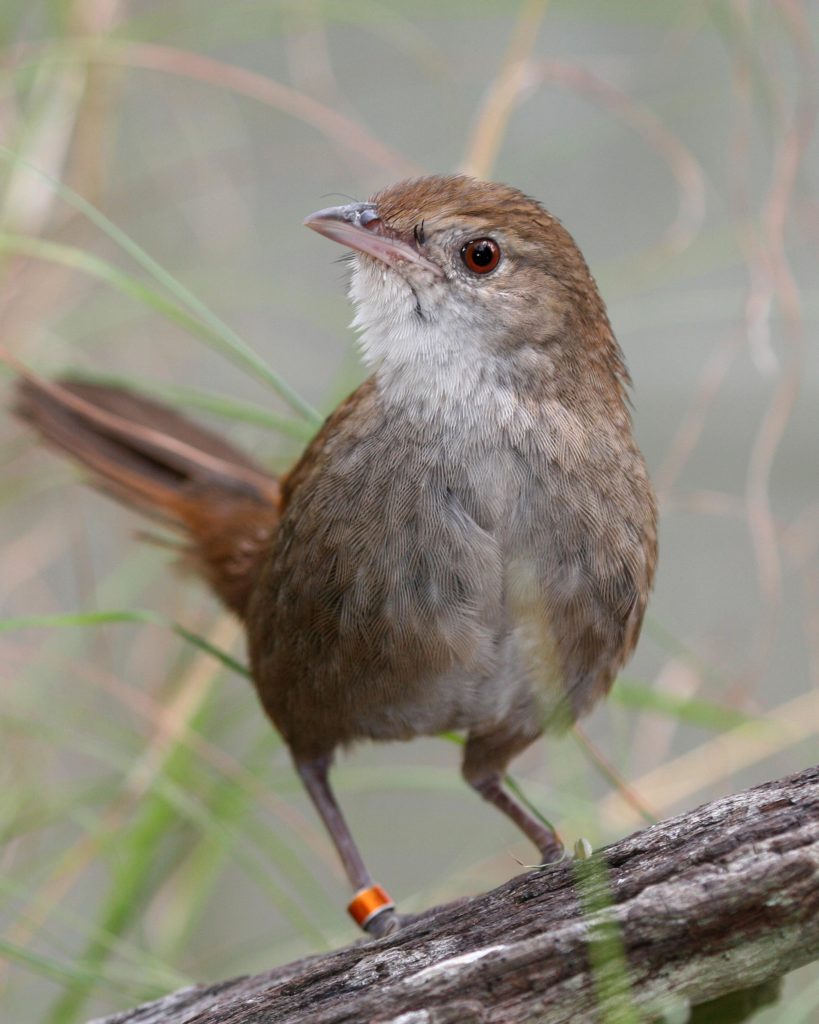Protected Magazine
Eastern Bristlebird
Found in New South Wales and on the southern border of Queensland in the ranges, the endangered Eastern Bristlebird (Dasyornis brachypterus) is becoming a very rare sight for birdwatchers.
There are three main areas this shy bird can be found; southern Queensland, central New South Wales and the New South Wales/Victorian border. The entire population of less than 2,000 individuals is estimated to occupy a total area of about 120 sq km (as of late 2021).
Sadly, there are now only four populations in the southern Queensland/northern NSW area with a total of 35 birds. Just 15 years ago, there were 154 birds across 14 populations.
Like many species in the southern Queensland/northern New South Wales area, these birds have been severely affected by extreme weather events, including fires in 2019/20 and recent flooding.
The Eastern Bristlebird builds their nest close to the ground and will only have a single clutch of 1 – 2 eggs per year. The eggs are laid during August – February, the middle of the Australian bush fire season. Unfortunately a large majority of young do not survive to adulthood due to predators and severe weather events.
Dark bristles around the beak give this little ground dwelling bird it’s name. Though capable of flights, it is rarely seen flying and instead hops around the underbrush in areas with a dense understory.
The favourite food of the Eastern Bristlebird is insects, particularly ants, which is why it is most commonly found scampering along the ground rather than flying.
In an attempt to save this species, specifically the Queensland/New South Wales border community, a captive breeding program is under way at the Currumbin Wildlife Sanctuary in Queensland. This program includes breeding the birds selectively to improve resistance to disease, increase genetic diversity and raise the fertility rate of the species. Eggs/chicks are also being collected from the wild as part of a recovery plan.
A frequent fire regime of between 3-6 years is required for the southern Queensland/northern New South Wales area and should include ecological and asset protection burns. Education for personnel planning and undertaking hazard reduction burns is now being rolled out so they are able to identify the species and are aware of its habitat.
Weeds and invasive plant species also pose a threat to this bird, particularly Lantana and Crofton Weed. Control programs are being put in place for these two plants and other invasive weeds and encroaching shrub species.
References:
Eastern Bristlebird – profile | NSW Environment, Energy and Science. (2022). https://www.environment.nsw.gov.au/threatenedspeciesapp/profile.aspx?id=10206
BirdLife International (BirdLife International. (2016, October). IUCN Red List of Threatened Species: Dasyornis brachypterus. https://www.iucnredlist.org/species/22704507/93972785


